Contents
Potatoes are a staple on any table. Most of the culinary dishes in our country cannot do without this healthy vegetable. Therefore, many gardeners grow it in their backyards and vegetable gardens. But in order to get a quality crop, you need to be able not only to grow, but also to preserve a vegetable. Storing potatoes has many nuances, which you will learn about from this article.
Place
Storing seed potatoes or regular potatoes always starts with choosing a location. The best place to store potatoes is in a cool, dark and dry space.
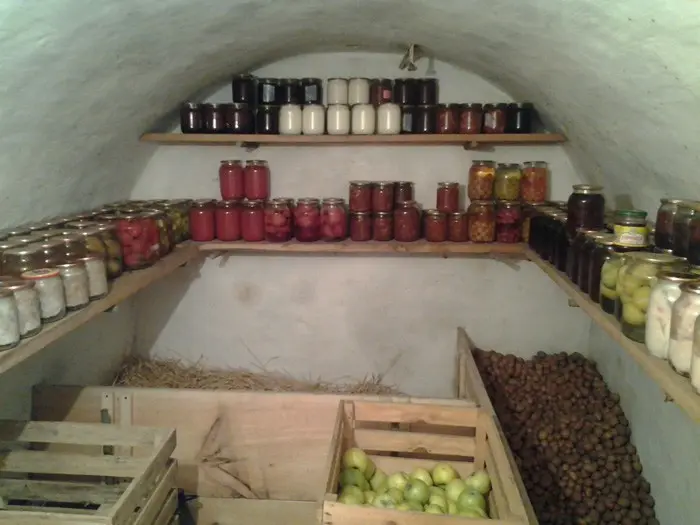
The following places are suitable for these characteristics at home:
- cellar;
- basement;
- box on the balcony;
- specially prepared hole.
It is important that the chosen place does not freeze through in winter and has all the conditions necessary in order to keep the various varieties of potatoes in their proper form. In such places, the storage of potatoes will be of high quality. The main thing is to comply with the necessary conditions, which will be listed in the next paragraph. It is worth noting that in such places you can save potatoes of any variety for the winter.
Storage of potatoes is usually the prerogative of cellars. But if it is not there or it does not meet the storage conditions, you can use other options. The most incomprehensible and difficult way in the organization is the pit, because it still needs to be prepared properly. So, it can be placed in the owner’s yard in close proximity to the garden. For its placement, we choose a dry and high place. An excellent solution would be a hole dug in a barn or under a canopy. So you can quickly achieve the creation of the conditions required for storage. When digging a hole, you need to take into account the characteristics of the soil.
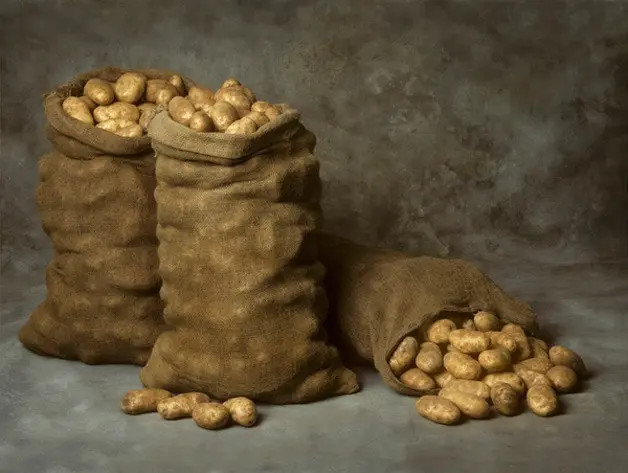
Pit preparation includes the following processes:
- actually digging the hole. The depth is approximately 1,5 m, and the diameter is 2 m;
- for the outflow of groundwater in the pit we make grooves;
- after that we lay out the walls and the bottom with straw
Every gardener should know how to store potatoes in a pit at home, because otherwise it may become unfit for human consumption. Pour potatoes into the prepared pit, leaving about 40-50 cm of space at the top free. We cover everything from above with straw and gradually fill it with earth.
However, not all varieties of this vegetable are suitable for storage in pits. Therefore, before using this method, you need to make sure which varieties will be suitable. This is the so-called “bulk” method of storage. In addition to it, at home, storage of potatoes is possible as follows:
- in boxes;
- in containers;
- in bags. As in the bulk method, there are no measures to prevent damage to the lower layers of the product.
Storage of potatoes in any container (container or box) is considered more preferable, since here all root crops can be stored under the same conditions. Moreover, in the cellar or basement, this method of preservation will be more comfortable. Thanks to the box (or container), all varieties of potatoes will remain edible. Moreover, placing vegetables in a container is also possible at home (on the balcony). And this is an undeniable plus.
Video “How to keep vegetables fresh”
Terms
To the question “how to store potatoes?”, Many experienced gardeners will say that, first of all, you should pay attention to storage conditions. The conditions for the organization of good preservation of any kind of products in containers involve the following actions:
- making holes in the walls of the container. This will improve the aeration of the bottom layers of vegetables. As a result, they will not dampen and rot;
- boxes should be placed on special supports that raise the container by about 15-20 cm. This is also an element of dampness control.

If storage is supposed to be in bins, then the layer of vegetables should be no higher than 1,5 m. In this case, air should be able to freely penetrate to the lower layers. This will allow the moisture that accumulates there to evaporate. As you can see, ventilation is one of the main nuances and conditions for the preservation of a vegetable in the winter.
In addition to humidity in this situation, the temperature aspect should also be taken into account. The optimal temperature range for storing any variety of this vegetable is 2-4 ° C. This range is great for cellars and basements.
Low temperature on tubers has an extremely negative effect. If it drops to 0 ° C, then the process of converting starch into sugar starts in the tubers. As a result, the use of such products will give the food an unpleasant sweetish aftertaste. At lower temperatures, vegetables will begin to freeze. This leads to the appearance of a looser and flabby consistency in the tubers, and the taste quality deteriorates significantly. In addition, such tubers rot more often.
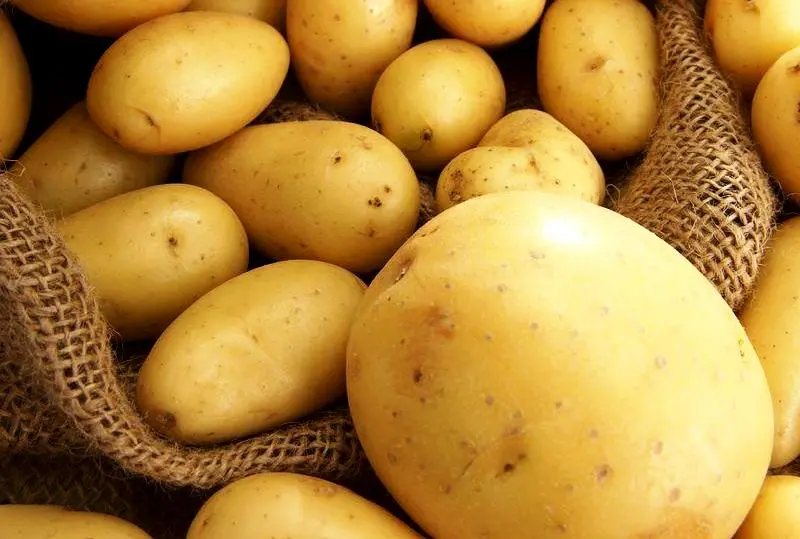
Elevated temperature also negatively affects the process of preserving potatoes. If the temperature rises above 4 °C, the tubers begin to germinate. They grow sprouts. In the process of germination of potatoes, a harmful and toxic substance, solanine, can accumulate in it. Therefore, these sprouts must be removed without fail. In the presence of strongly germinated sprouts, such vegetables should not be eaten.
With the help of thermal insulation, you can keep the temperature regime within the required limits. This process requires covering the potatoes with clean empty crates, bags full of chips, etc. Such insulation will protect vegetables from the cold, and also absorb excess moisture. When the shelter becomes wet, it should be replaced with a new one.
One of the methods of effective thermal insulation is the placement of beets over the tubers. A layer of such a vegetable better tolerates low temperatures, preventing the potatoes from freezing.
Separately, it is worth noting that in the basement or cellar, you can create an active ventilation system. It will provide air movement in the storage. This will avoid not only waterlogging of the air, but also help maintain the temperature regime in the required range. The air supplied to the storage should be 2-3 degrees higher or lower than in the cellar.
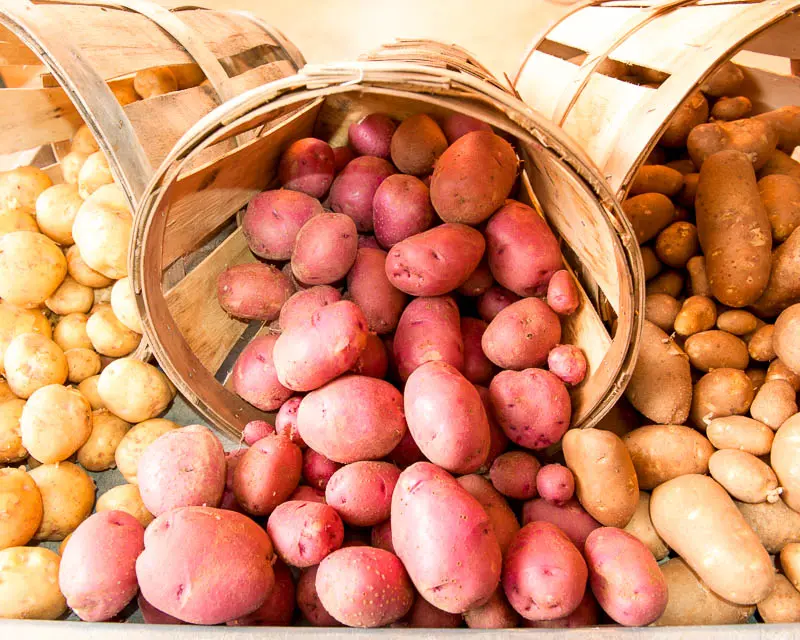
In addition to humidity and temperature conditions, it is very important that the stored tubers are not exposed to light. Indeed, in this situation, the germination of vegetables is possible, even if the two previous conditions are met strictly.
Also, another enemy in storage are some fungal microorganisms that cause tubers to rot. An excellent method of combating pathogenic microorganisms is to place between the layers of potatoes the leaves of those plants that contain phytoncides in their composition. These plants include rowan, fern, gout, elderberry, wormwood.
Another effective method of combating rotting of stored products is the proper processing of tubers before laying them in the basement for the winter.
All these conditions are suitable for almost any variety of potatoes. Only some varieties may have minor nuances in storage methods.
By following the above conditions, you will be able to keep potatoes with optimal taste and nutritional characteristics throughout the entire cold period.
Preparing for storage
All varieties that are planned to be stored in cellars or other places must undergo additional training.
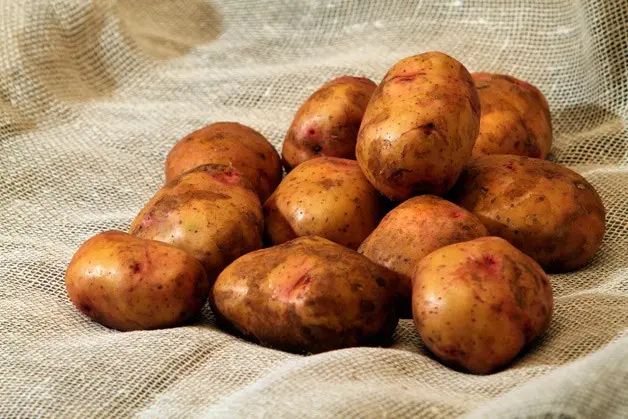
Vegetables are processed as follows:
- sorted, removing damaged and bad tubers;
- clean from soil and plant residues;
- dry;
- disinfected with a solution prepared from freshly slaked lime. It is prepared like this – 8 kg of lime is diluted in 10-2,5 liters of water;
- fumigate.
Also, the room itself requires preliminary preparation. In this situation, it is necessary to carry out such manipulations:
- preventive inspection of the premises for damage to the walls or floor;
- room disinfection;
- adjusting the equipment used to create optimal ventilation and temperature conditions.
Properly done preparation of both vegetables and storage will help you successfully keep the tubers at an appropriate level of quality. The main thing here is to do everything consistently and avoid situations where there is a risk of rotting or sprouting potatoes in storage. Therefore, throughout the winter period, it is necessary to periodically check vegetables and eliminate any deviations from the norm. Only in this way you will get a quality product on the table, from which you can cook many tasty and healthy dishes.
Video “Laying potatoes for storage”
Storing potatoes is not as easy as it might seem at first glance. In this video guide, you will learn how to properly store this crop for storage in the cold season.









